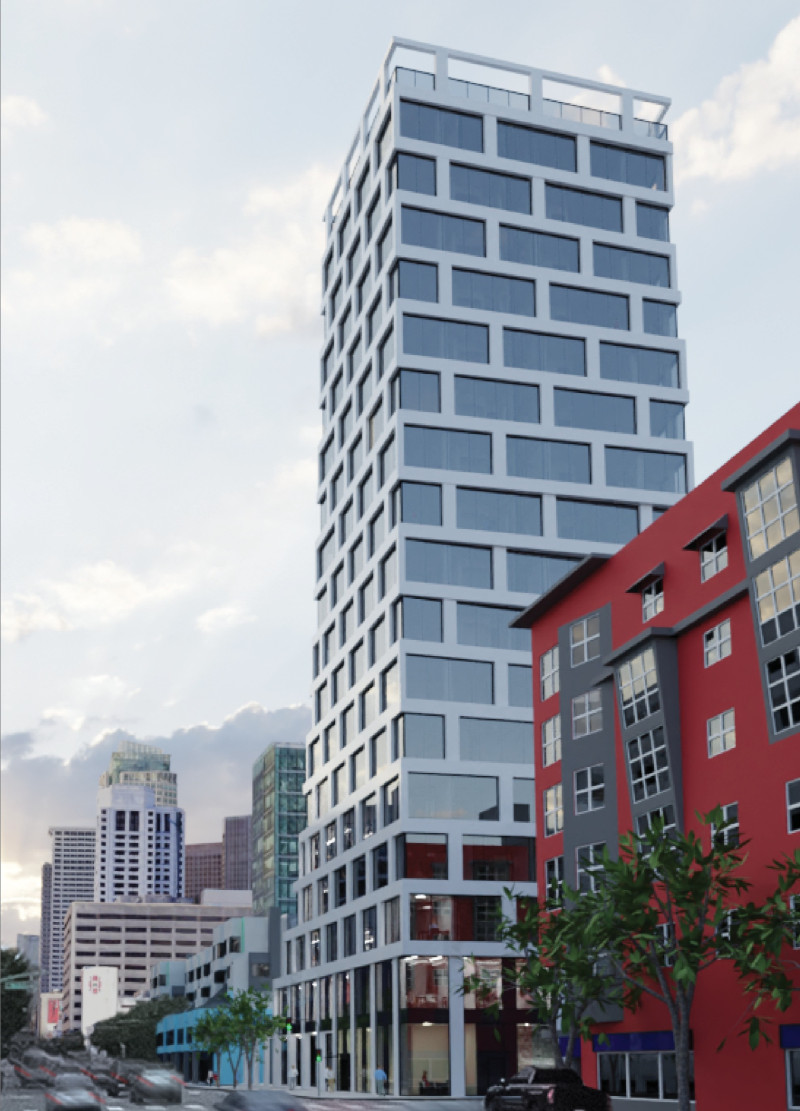5 key facts about this project
At its core, the project serves a dual function, likely acting as a hybrid space that accommodates both public engagement and private activities. This duality is reflected in the careful zoning of spaces, which allows for dynamic interactions without sacrificing comfort and usability. The architectural layout promotes fluidity, guiding users through distinct areas that each offers unique experiences while allowing easy transitions between them. In doing so, the design fulfills its role as a communal hub, essential for fostering social interaction within the urban fabric.
A significant aspect of the project is its choice of materials, which plays a crucial role in defining the overall experience of the space. Predominantly featuring sustainably sourced timber, glass, and concrete, the materials reflect a commitment to both durability and environmental responsibility. The use of timber not only adds warmth to the interior spaces but also establishes a connection with nature, enhancing the overall ambiance. Expanses of glass facilitate transparency and visual connectivity, inviting natural light to permeate the building while providing panoramic views of the surrounding area. The concrete elements, utilized strategically, lend structural integrity and a modern edge to the overall aesthetic.
Unique design approaches are evident throughout the project, particularly in its incorporation of green roofs and vertical gardens. These features not only contribute to the building's energy efficiency but also enhance biodiversity within the urban context. The integration of landscaping into the architecture reflects an understanding of the importance of nature in urban design, providing spaces for relaxation and contemplation amidst the bustling city environment. This incorporation of greenery serves to improve air quality and create microclimates, demonstrating a thoughtful responsiveness to the environmental challenges faced by urban centers.
The architectural details showcase meticulous attention to craftsmanship. The façade features intricate wooden slats that create a rhythm and texture, contributing to the building’s visual appeal. This design element serves both aesthetic and functional purposes, aiding in solar shading while allowing for ventilation and enhancing the building's energy performance. The careful alignment and proportioning of these details further establish a cohesive identity, ensuring that the architecture is not only functional but also resonates with the cultural context of its location.
Furthermore, the site planning reflects an understanding of the urban landscape, with pathways and access points designed to enhance connectivity. The layout welcomes pedestrians and cyclists, promoting sustainable modes of transportation and encouraging a sense of community. By prioritizing accessibility, the project illustrates a commitment to inclusivity, ensuring that all individuals can engage with the space comfortably.
This architectural endeavor stands out for its thoughtful integration of materials, innovative spatial organization, and ecological mindfulness. By fostering a dialogue between the built environment and its natural surroundings, the design captures the essence of contemporary urban living while retaining a respectful nod to sustainability. The commitment to creating functional and inviting spaces is evident in every detail, from the overall form down to the smallest architectural features.
It is highly encouraged to explore the project in greater depth, examining the architectural plans, sections, designs, and ideas presented. These elements provide valuable insights into the project’s conceptual framework and execution, showcasing the thoughtful decisions that contribute to its distinctive character. By diving into these details, readers can appreciate how architectural ingenuity can harmonize with community needs and environmental consciousness.


 Oskar Erik Gösta Frick
Oskar Erik Gösta Frick 




















